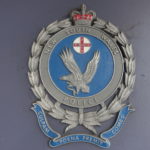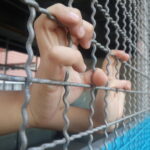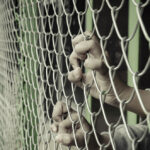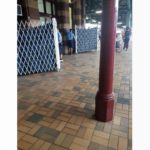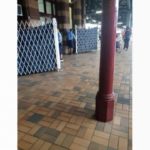Youth Detainees Continue to Be Routinely Strip Searched in NSW
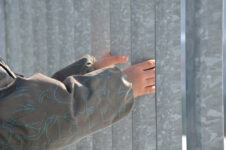
The NSW Ombudsman has just released a report into the contentious full body strip searching of three youth detainees at Frank Baxter Youth Justice Centre in November 2019 by Corrective Services NSW (CSNSW) officers, who’d been called in to deal with an escalating situation.
Released on 8 June, the Strip Searches Conducted After an Incident at Frank Baxter Youth Justice Centre report found that the strip searching of these three youths by officers from adult correctional facilities was “unreasonable”, “oppressive” and “disproportionate”, however it was technically lawful.
Following a mid-2019 riot at Frank Baxter, the administrator of juvenile facilities in NSW, Youth Justice NSW (YJNSW), came to an agreement with adult prison administrator CSNSW, so that the latter’s security operations unit can be deployed to take control of youth justice disturbances.
The November 2019 search incident saw CSNSW officers called in to deal with three youths who’d climbed onto a roof, gained access to tools and were threatening staff. After the officers deescalated the situation, the teens were then full body strip searched in view of operating CCTV cameras.
NSW Ombudsman Paul Miller has recommended the closing of a legal loophole to prevent the use of adult facility approved full body searches on young people in detention centres, and he’s also raised concerns around the routine use of partially clothed body (PCB) searches upon detained youths.
The incident in question
On 24 November 2019, three youth detainees – two 17-year-olds and an 18-year-old – climbed onto a roof at the Frank Baxter Centre in Kariong and began throwing items and making threats towards youth justice officers below.
Under a recently arranged memorandum of understanding (MOU), YJNSW called on CSNSW to send in its special unit officers to deal with the disturbance. And after a period of negotiation with CSNSW officers, the youths climbed down, were handcuffed and given a pat down search.
The young detainees were then taken into observation cells and made to remove all of their clothing at once. The three teenagers were made to lift their genitals, while one was asked to bend over, part his buttocks and a torch was used to inspect him.
Two sets of rules
A 2018 amendment to the Children (Detention Centres) Regulation 2015 (NSW) (the Regulation) clarified the types of searches that youth detainees can be subjected to in this state’s juvenile facilities. And in doing so, the legislation effectively banned full body strip searches in such centres.
Section 11A(4) of the Regulation provides that young detainees can be subjected to a partially clothed search, which requires a youth to first remove either the top or bottom half of their clothing for visual inspection, before undergoing the same process on the remaining section of the body.
However, CSNSW search policy provides that male adult prisoners can be asked to remove all of their clothing at once during a strip search. And officers may require an inmate to lift their genitals, as well as bend over and part their buttocks if there’s a reasonable suspicion it’s necessary.
Wrong but not illegal
The investigation followed the NSW Inspector of Custodial Services raising concerns around the possibility that the incident might have involved “unauthorised strip searches”. She also provided the Ombudsman with CCTV footage of the incident.
The NSW Ombudsman found that under the MOU, when CSNSW officers attend a youth facility to deal with a riot or some other form of disturbance, they bring with them the powers that they operate under within adult facilities.
Therefore, the officers involved were permitted to conduct the strip searches in the manner that they did.
However, the NSW Ombudsman also found that under section 26 of the Ombudsman Act 1974 (NSW) (the Act), that it was unreasonable not to have recognised the vulnerability of youth detainees by legislating policy safeguards to ensure that this incident didn’t occur.
The report sets out that the searches were oppressive within the meaning of the Act, as they were disproportionate to any risk being posed, as the youths had already been subject to a pat down search, while there was certainly no reason to suspect a search of the buttocks was necessary.
Further, the Ombudsman found it was wrong to have carried out the searches in front of operating CCTV cameras, as body worn cameras that were taking footage provided a sufficient record, while there were rooms where the searches could have taken place without operating cameras.
A strip search by any other name
The NSW Inspector of Custodial Services raised issues around the routine use of partially clothed body searches in youth facilities in a December 2020 report. It found that in the case of Cobham Youth Justice Centre these invasive searches were being applied with a 0.58 percent success rate.
“From 1 May 2018 to 1 May 2019, 3,939 PCB searches were conducted on young people at Cobham YJC,” the report reads. “Of the 23 contraband items found, the majority of those items were screws and pieces of metal. Some cigarette lighters were also found.”
An issue that Sydney Criminal Lawyers raised at the time was that so-called partially clothed body searches are exactly the same as those being used upon adult women inmates in NSW correctional facilities, however when they’re applied to adult women, they’re referred to as strip searches.
The current report notes that these partially clothed searches are considered strip searches if the NSW Police Force carries them out, and the Law Enforcement (Powers and Responsibilities) Act 2002 (NSW) (the LEPRA) classes them as strip searches as well.
The NSW Ombudsman also resolved to use the terms PCB (partially clothed body) strip searches and FNB (fully naked body) strip searches throughout his inquiry report to reflect “the common sense understanding of the term ‘strip search’”.
“In our view, a common sense understanding of the term ‘strip search’ includes what YJNSW calls a ‘partially clothed search’,” the report reads.
Alternate means can be applied
Miller made nine recommendations, which include that the legislation and the MOU ensure that any searches carried out upon youth justice detainees – who can range from 10 years old right through to 21 years old – must be done in accordance with the Regulation.
The NSW Ombudsman also recommended the Regulation be updated to provide that PCB strip searches are carried out in the least invasive manner, that they be done in private and only necessary clothing be removed. And he further suggested these searches shouldn’t be routine.
“The recommendations made in this report are aimed at ensuring alternative searching methods are used for young people when appropriate, including pat down searches in conjunction with metal wands or body scanners,” the report reads.
And a further recommendation is that “YJNSW establish a system to capture digital records of all searches and ensure that the Ombudsman has live access to these records and related reports”, as it was found that currently records “are paper-based and held at each youth justice centre”.


